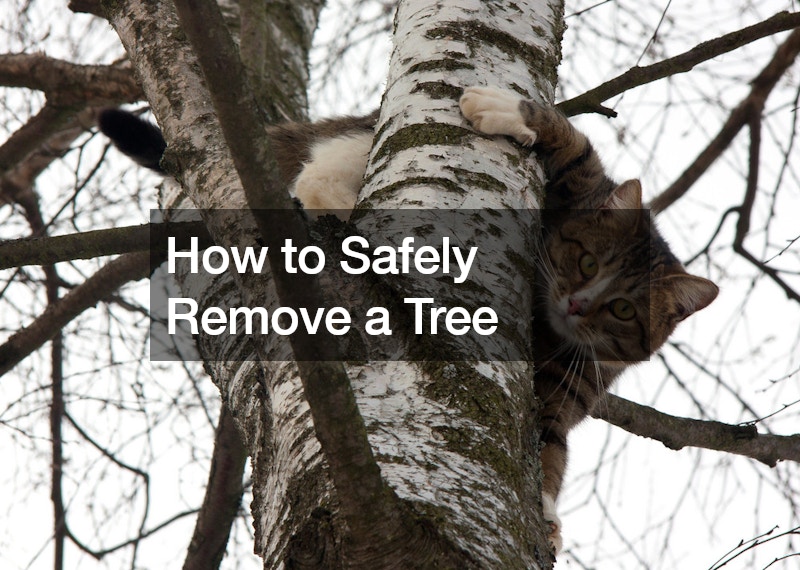
Homeowners who have trees in their yards are responsible for caring for their trees. If you have trees, you may want to know about the reasons for tree removal from your property. When a significant part of the tree has become damaged (mainly if the damage affects the main trunk), it can lead to decay. Enough decay in the trunk will cause the inevitable death of the tree.
When a tree in your yard is dead, the decay can spread to the surrounding area and harm nearby plants. When a homeowner recognizes a tree is dead, they should contact a tree removal service. These professionals can safely remove a dead tree. They can even help with removing large trees near a house in a way that won’t damage the house.
Tree removal professionals are also the ones to handle special tree situations. When a tree is on the property and must be removed, it’s not as simple as merely uprooting a tree. Trained arborists (tree professionals) typically cut off the branches and then split the trunk of a tree when removing the tree. If a tree remains healthy but falls on a home, the homeowner must call a local fallen tree removal service.

If you need to get rid of a tree, it’s always best to go with a tree removal company rather than do things yourself. Many municipalities and town regulations require a permit to do any form of tree removal, which can be as tedious to obtain as the tree removal process is physically tiring.
However, since getting rid of a tree can eliminate the dangerous risks that it poses to you, your family, and your home, you absolutely need to take care of it. Tree removal ensures that there won’t be any falling limbs, and that the tree won’t uproot itself and fall.
Whether you hire tree removal services or choose to get the proper licensing to take care of it, the first thing to do is to consider the position of the tree. Is it on a slope near your house or the power lines? Whichever way the tree leans will help determine where the cut points will go so that gravity can do some of the work for you.
Depending on how big the tree is and what surrounding obstructions there are, you may have to get up there and remove some branches before taking it down. This will help you make sure that it doesn’t damage any people or property as it’s felled.
Once the branches are off, the trunk (I.E. the rest of the tree) has got to be removed. This is typically done by cutting it down into two to three-foot sections. This is typically done for bigger trees, but smaller tree trunks can be removed with just a hand saw or an ax to make simple V cuts and backcuts. In the case of the smaller tree, whichever side has the undercut, the “V” shaped cut, is the side that the tree’s going to fall on. The smaller “backcut” is placed about two inches higher than the V cut and on the opposite side of the tree, which helps it fall.
Now, the stump is all that’s left. There are a few ways that it can be removed. The first of which is with a special machine called a stump grinder. This can be rented or bought, but the bigger the stump, the wiser an idea it would be to just let a tree removal business take care of it, since their machinery will be more powerful than the grinders available to consumers. In other cases, the trunk can get dug out. The farther away from the stump one digs, the easier the job will be. Thirdly, chemical accelerants can be used to expedite the natural decomposition process. Lastly, there is always the option to let nature take its course and simply allow the stump to decompose all on its own.
In the end, whether you’ve taken charge of the project or hired tree removal contractors, it’s a job that has got to get done. If you have any questions about tree removal, feel free to ask in the comments.
